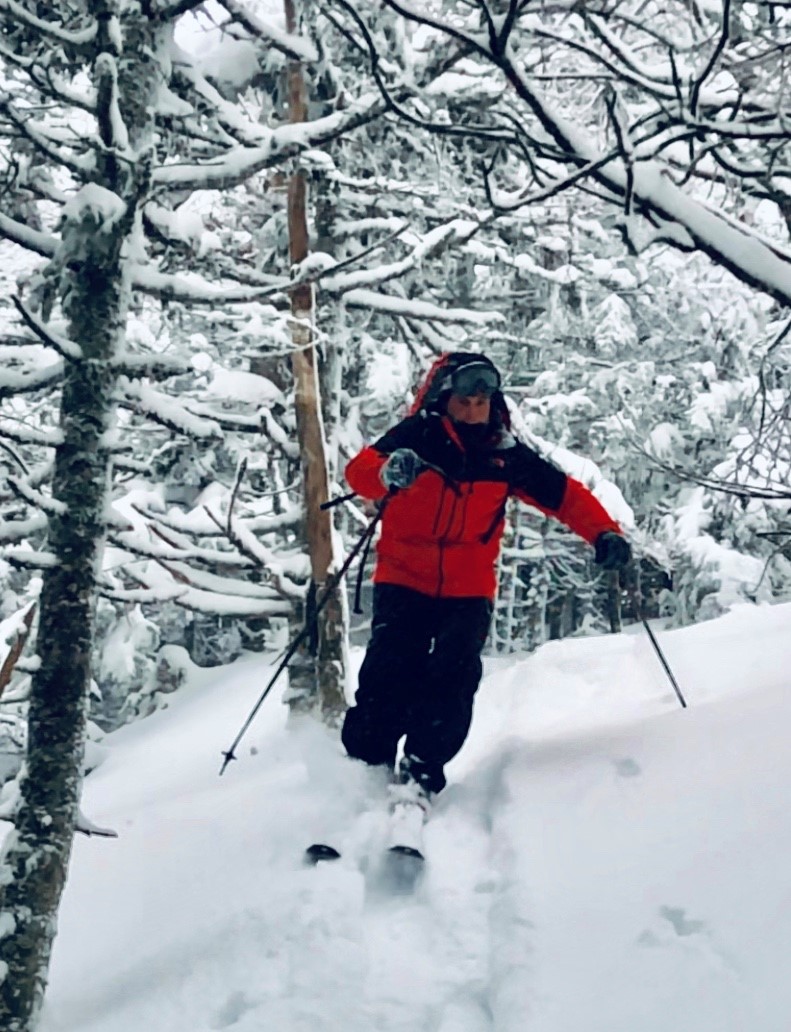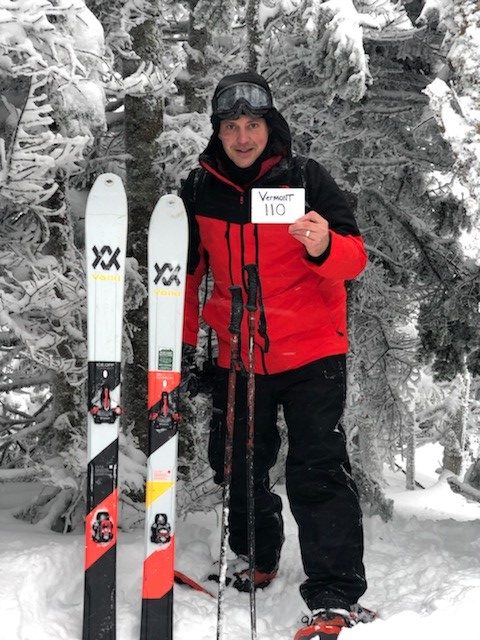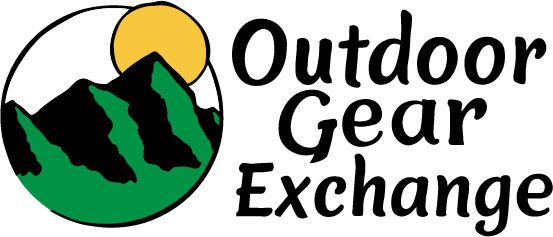This article was written by Spencer Crispe.
 The more society retreats into social media and the digital black hole, the more I feel the need to spend time outdoors. As a ninth-generation Vermonter who has lived my whole life here, I started skiing when I was three. But with the price of lift tickets pushing the cost of running a luxury yacht, I left the slopes and headed for the backwoods. I am proud to say that I have now hiked and skied all 110 Vermont mountains above 3,000 feet.
The more society retreats into social media and the digital black hole, the more I feel the need to spend time outdoors. As a ninth-generation Vermonter who has lived my whole life here, I started skiing when I was three. But with the price of lift tickets pushing the cost of running a luxury yacht, I left the slopes and headed for the backwoods. I am proud to say that I have now hiked and skied all 110 Vermont mountains above 3,000 feet.
I began hiking the 3,000-foot peaks several years ago, and it made me wonder if anyone had ever skied them all. I couldn’t find information that had anyone had, so I decided to try. At first, I thought this was a somewhat ludicrous goal, and the idea of it was daunting, but I went for it anyway. Since calendar winter in Vermont has only twelve short and precious weeks, I spent most of my free time in that season climbing and skiing.
Let me emphasize that this was a potentially hazardous undertaking. I reduced risks by carefully studying maps for the best routes, taking a satellite phone so I could call for rescue, and packing enough supplies for a night in the woods. I also told two people where I would be each trip, and described my ascent and descent routes in case I needed to be found. I hiked the 110 peaks in summer and fall by compass, but I took a GPS receiver for the winter endeavor.
I ascended and descended each mountain by the same route to avoid cliffs and other dangerous or impassable terrain. To enable tight turns in dense woods without snagging brush, I used extremely short randonnée skis. And I wore goggles, because many of the 3,000-foot peaks are trailless, virtually ensuring smacks in the face by branches in the insane obstacle course of Vermont’s backcountry.
The Long Trail crosses many of the 110 peaks, so I snowshoed long stretches of it—a different animal altogether in winter. Snow obscures the footpath, and blazes are hard to spot even if the trees are free of snow. Snowshoeing and skiing on three to five feet of snow elevates you so that your head is among branches you’d never even notice in summer. Traveling in some spots along the Long Trail in winter can be equivalent to bushwhacking.
Notable Peaks
 Glastenbury, Peru Peak, Breadloaf, and Bolton Mountains were especially memorable Long Trail summits to ski because of the interesting terrain and bottomless snowpack. When I did East Ethan Allen, Vermont had just had a near-record winter storm. Ascending through more than four feet of fresh powder felt like it took an exhausting eternity, even though I brought 40-inch-long snowshoes for better flotation. It was worth it, though, because the descent was best powder skiing I’ve ever experienced here—the kind of powder day that dreams are made of.
Glastenbury, Peru Peak, Breadloaf, and Bolton Mountains were especially memorable Long Trail summits to ski because of the interesting terrain and bottomless snowpack. When I did East Ethan Allen, Vermont had just had a near-record winter storm. Ascending through more than four feet of fresh powder felt like it took an exhausting eternity, even though I brought 40-inch-long snowshoes for better flotation. It was worth it, though, because the descent was best powder skiing I’ve ever experienced here—the kind of powder day that dreams are made of.
Vermont mountains are abundant in natural glades and chutes, making for some of the best backcountry skiing around. The northeasterly ridge of Signal Mountain in Groton, for example, was an open glade field with deep powder and incredible turns. As a bonus, the sun was out that day and the sky was blue. I remember feeling like life couldn’t get any better!
Some densely forested mountains, however, do not lend themselves to backcountry skiing in any manner. They were hazardous and nearly impossible to ski. I descended with extraordinarily slow and wide S-turns, skiing at a walking speed because I felt going any faster could cause serious injury or even death.
The cone of Dewey Mountain is steep and has some of the thickest conifers I traveled through. Another extraordinarily formidable peak is Whiteface Mountain (also known as Sterling Mountain) in Morristown. The conifers were almost impenetrable, at times making it hard to advance in any direction.
The Worcester Range has steep, rocky terrain with concentrated conifers too, and feels like the Adirondacks to me. East Seneca Mountain is so far off the beaten path you have to climb for many hours over West Seneca Mountain through thick forest just to reach it. (I’ve never claimed to ski every mountain quickly.)
Finishing My Goal
 Skiing the Vermont 110 ensures you will get hit in the face with branches; shred your clothing; and break skis—I broke two pairs. (On Worth Mountain, one ski broke in half!) And strenuous ascents in deep, unconsolidated snow will slow you to a crawl. But the mental and physical benefits of getting outside and earning your turns by snowshoeing to a summit cannot be stressed enough.
Skiing the Vermont 110 ensures you will get hit in the face with branches; shred your clothing; and break skis—I broke two pairs. (On Worth Mountain, one ski broke in half!) And strenuous ascents in deep, unconsolidated snow will slow you to a crawl. But the mental and physical benefits of getting outside and earning your turns by snowshoeing to a summit cannot be stressed enough.
I accomplished my goal on January 5, 2020. It feels great to be the first person I know of to ski all 110 major mountains in Vermont. It took a massive effort and thousands of hours of commitment over four winters, but it reinforced my conviction that Vermont is the most beautiful place on the planet.
I also discovered that much of Vermont’s terrain is well-suited for backcountry skiing and comes with stunning winter scenery and heavenly powder turns that do not cost a dime.
Spencer Crispe is a passionate skier, hiker, and trail maintainer. He is a 2010 Long Trail end-to-ender and 2013 Catamount Trail end-to-ender. In addition, he has climbed extensively outside of Vermont and has completed the 222 Adirondack mountains above 3,000 feet, 100 highest peaks in the Catskills, 115 Northeast 4,000-footers, and 176 peaks above 3,000 feet in New Hampshire. Spencer lives with his wife in West Brattleboro.
If you’d like to hear more about this adventure, join us for Spencer’s Taylor Series talk on Thursday, February 13th, 2020, at 7 PM at the GMC Visitor Center in Waterbury Center, VT.



















Leave a Reply